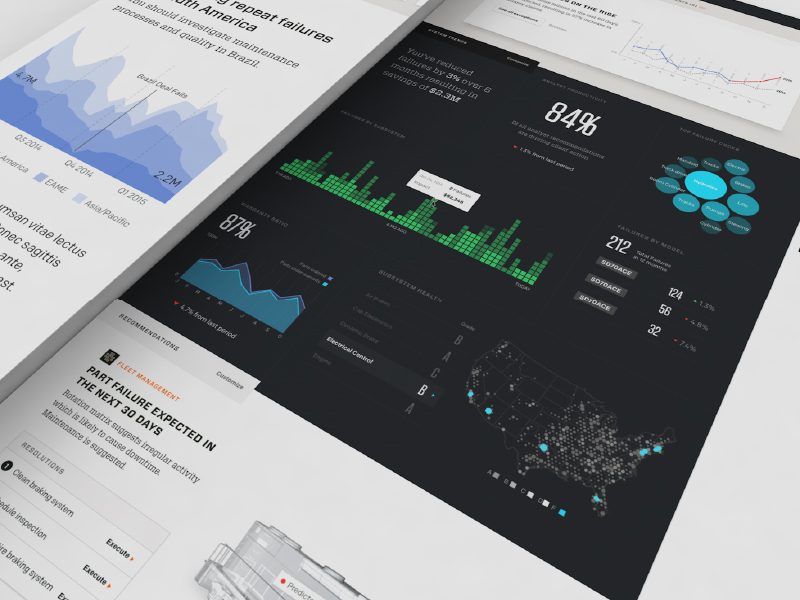When it comes to business planning and decision making, the demand for the ability to prospect the future is growing rapidly. With business analytics, companies can get an insight into where are they standing and where they are heading. Data and statistical methods make it possible to understand business performance and the expected (impending) impacts.
Competitive advantage, efficiency and customer satisfaction increase. As if predictive analytics was a miracle tool for companies. In addition to all its benefits, you may have to face some disadvantages.
The goal of this article is to give you a picture of the benefits and disadvantages, so you don’t have to experience everything empirically.
Data only has value if you know how to deal with it. If you look at website analytics, you have a lot of options to collect quantitative data. But, as they say, the devil lies in the details. In the case of website analytics and user experience, this means that you need to collect and process qualitative data also. This is where advanced website analytics tools come into the picture. If you combine the utility of these tools with the flexibility of predictive analytics, samples and patterns become recognizable. Your next step will be based on a series of insights rather than guesswork.
|But why do I say “if you combine”?
Because not every analytics is predictive
Analytical tools can be used to analyze large amounts of data with complex mathematical and statistical algorithms. But the term “analytics” is used in a very broad way. PA is a subfield of these methods used to identify future trends and behavior patterns. For example, most of the common tests done by web companies are focusing on the term “visitor”. They track visitor movements, and how they behave. This is a traffic-driven, one-time relationship with the customers, where the main goal is to determine. The traffic comes from. In a visitor-centered business model, common metrics include “time spent” or “click-through rates”.
Then there are the users. At first, both might sound the same, yet, users represent a long-term relationship.
Dave McClure (blogger) defined five important steps in the customer lifecycle in a user-centered model.
- Acquisition
- Activation
- Retention
- Referral
- Revenue
As you can see, acquisition and activation are just the first steps. The real deal starts when the model steps in the Retention phase. Retention rate is essential when it comes to User Experience design.
Estimation, not revelation
It is important, that these solutions do not tell you what will happen in the future. The probability of occurrence of the examined trends and expected events is, however, determined with acceptable accuracy. This allows some headroom for “what would happen if” questioning or risk assessment.
|Sounds smart right?

In other words, with the help of predictive analytical models, business users, website owners can analyze the latest data and so-called “historical facts” as well. This allows them to better understand the mindset and needs of customers, partners. Discover potential risks and opportunities. Predictive analytics uses many techniques to serve the analysis process. They range from data mining, statistical modeling to machine learning. The goal is to improve the accuracy of analysts’ business forecasts.
Predictive Analytics profits from Big Data
Whether it is real-time or previously stored information. In fact, instead of a historical overview, companies can look ahead and assess the needs of the customer before they actually appear. A wide range of opportunities is well illustrated by IBM’s predictive analytics solution site. Methods of predictive analytics overlap with data mining, Big data or BI (business intelligence) methods at many points.
For example: If a store analyzes information from sales of its former loyalty programs, it will be easier to understand who is most likely to use coupons or purchase promotional offers. By examining their browsing habits with predictive analytics, you can provide a custom website experience to your customers, providing them with a shopping opportunity that can increase their satisfaction.
Tangible benefits
Another study by IBM shows how big is the interest in predictive analytics: the market grows by 8-10 percent annually. It is not surprising as it offers a number of tangible benefits. For example, you can have a surprisingly high competitive advantage such as:
- have access to trends what is unknown to competitors
- higher sales
- Increase in user, customer retention rates
- predict risky processes
- prevent fraud
The list goes on, while the product and service of the company keep getting better and better.
Not everything is made out of gold

Artist: VietLeDuy
The picture can only be complete if I mention the oddities of predictive analytics. In some areas, historical data cannot or may not be inaccurate to draw conclusions about the future. You can not take everything into account. If we work with 1000 variables, then nature creates the 1001th. This means, that forecasts may have an uncertainty factor that can fully cover the estimate. This is described in detail in the so-called Black Swan Theory. Nassim Nicholas Taleb, a renowned financial thinker, formulates in this theory the mechanism of extremely unlikely events that are unforeseeable, mass influencing and can only be explained predictably.
How can you use Predictive Analytics?
This does not mean that predictive analytics should be abandoned, but rather the need to find the places of application and methods. In fact, there are way more benefits when it comes to solving problems. For example, it can do great service in:
- training companies on market innovations
- keeping the focus on relevant information
- can help you discover the challenges of digital marketing and the solutions that can be made
- can also be used to support targeted marketing campaigns
- assist the HR department, helping you select a candidate for a certain position
Conclusion:
So what is predictive analytics good for? It shows the company’s development, provides opportunities for continuous learning. If a business decides to “play by the numbers” then predictive analytics is the ultimate cheat sheet. Especially if your web service and your business model are built around repeatability. This way you are already measuring metrics across the entire customer lifecycle from acquisition to repeat usage and revenue. By using predictive analytics, you can lower your cost of acquiring users. Helps you in ensuring sticky customers, and increasing your revenue, just like Facebook, Marriott, and UPS.
Don't forget, sharing is caring! :)

